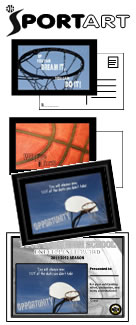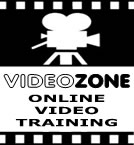 In becoming a good ball-handler, learning to dribble well is essential and really taught at HOOPZONE camps. If you're good at dribbling and have some quickness, you can create a lot of offense for both yourself as well as your team. For beginners, "dribbling" means bouncing the basketball. Once you catch the ball and start dribbling, and then hold the ball, you have to either shoot it or pass it. It would not be legal to dribble it again. Once you pass it or shoot it, and then get it again, you're free to dribble again. In becoming a good ball-handler, learning to dribble well is essential and really taught at HOOPZONE camps. If you're good at dribbling and have some quickness, you can create a lot of offense for both yourself as well as your team. For beginners, "dribbling" means bouncing the basketball. Once you catch the ball and start dribbling, and then hold the ball, you have to either shoot it or pass it. It would not be legal to dribble it again. Once you pass it or shoot it, and then get it again, you're free to dribble again.
DRIBBLING DRILLS XXXXXX DRIBBLING VIDEOS
4 KEY THINGS TO REMEMBER WHEN DRIBBLING:
 Only use your finger tips and pads when contacting the ball with your Only use your finger tips and pads when contacting the ball with your
dribbling hand.
You get better control and power on your dribble
when
you keep it on your fingertips.
 Make sure your fingers are spread apart wide but not uncomfortable. Make sure your fingers are spread apart wide but not uncomfortable.
 On the down dribble extend your arm, wrist and fingers down towards On the down dribble extend your arm, wrist and fingers down towards
floor as if
you are waving at the floor.
 When ball bounces back up ride the ball up with finger tips and pads When ball bounces back up ride the ball up with finger tips and pads
again
to regain control of the ball. Do not slap the dribble.
At HOOPZONE camps we teach 4 basic styles of dribbling:
Control Dribble, Power Dribble, Speed Dribble and Crossover Dribble. Although there are move types of dribbles these 4 styles below are the building blocks of good fundamental dribbling and every player must master each one. Let look at how each of these are used.
CONTROL DRIBBLE:
This dribble is used when the defender is out of position, like you're dribble up the floor and defense is 10' away. Your dibble should be waist high, your knees bent and somewhat bent at waist. Click here for video example.
POWER DRIBBLE:
This dribble is used when the defense is right on you ready to steal the ball. Almost turn sideway putting your body between the defender and the ball, get low and wide to help keep defender away and for your balance. Your forearm should be up in a armbar position to protect the ball and look over to see the floor and teammates. Dribble low and at or behind your rear foot away from the defender. Move in a slide step dribble. Click here for video example.
SPEED DRIBBLE:
This dribble is used when the defender is WAY out of position, like in a fast break situation. A full speed dribble is almost like you are throwing (dribbling) the ball out in front of you and you are sprinting to get to it. When you catch up to the ball let your wrist come back to 90 degree angle receive the ball to repeat dribble. The ball in this case can come up to your chest area because there is no defense around you. Click here for video example.
CROSSOVER DRIBBLE:
The crossover dribble is important in the open court on a fast break or aggressive move to get open on a drive. A player should use a crossover when a defender overplays them on the ball side thus opening up their opportunities to shoot, pass or drive to basket. To execute the crossover dribble, the player should cross the ball in front of them at a backward angle, switching the dribble from one hand to the other. The ball should be dribbled close to the body and around knee level. Once completing the crossover the player should take aggressive steps to maintain the advantage over the defender. Click here for video example.
H O O P E R X D R I B B L I N G X T I P S |
DRIBBLE AT GAME SPEED
Practicing the right way means doing things at game speed, and in game-like situations. Don't go outside and just dribble around at half-speed. That will help you, but not much. Practice at full speed, at game speeds to really make a difference and improve your game.
DEVELOPE YOUR OFF HAND
It is important to work right from the start at developing both hand equally well. When practicing your ball handling, make sure that you practice at least as much with your weak hand as you do your strong hand, eventually increasing to twice as much with your weak hand. If you have trouble dribbling with your weak hand defenders will pick up on this and give you big trouble!
NO PEEKING
Learn to dribble without needing to look at the ball. This is hard for youth when first learning but required the older you get, so begin this habit young. Keep your head up and stay alert to what's happening on the court, not what's happening at your feet. Think of it this way the floor is flat and your dribble down where else can the ball go but straight back!
KEEP IT CLOSE AND LOW
Learn to keep your dribble close to you and not out front or out off to the side. Also work on staying low to the ground, keeping the dribble low, and having good control in terms of changing direction if and when necessary. And always keep the ball on your fingertips. You get better control and power on your dribble when you keep it on your fingertips.
STAY AWAY FROM TRAP AREAS
As a general rule, you should stay away from the corners and sidelines when performing as a dribbler. These are sure defensive trap areas and you will get caught!
DRIBBLE WITH A PURPOSE
Be sure there is a purpose to your dribbling and not just dribbling. Useless and excessive dribbling can hurt the team. Do not pick up your dribble until you know what you are going to do with it. Picking the ball up with no plan creates a deadball for defense then they attack you!
PROTECT THE BALL
When dribbling against a defender, ALWAYS protect the ball with your body. You can do this by dribbling with your left hand when you are going left and your right hand when you are going right. This will force the defender to reach across your body to attempt a steal.
FOOTWORK WITH THE BALL
Work on your footwork: being a good dribbler means going somewhere with the ball, coming to a good jump-stop, pivoting, and either passing or shooting the ball. Dribbling is a skill that is related to having good footwork (as almost every part of the game is). So work on good two-foot jump-stops, front and back pivots, and changing pace and direction. With a lot of hard work, you'll improve. Easy? No. But the hard work will pay off for you.
EVERYONE MUST HAVE GOOD DRIBBLING FORM
Good ball handling dribbling skills aren't just important for guards and small forwards. All players should improve their ball handling skills. Even if you're a center or forward that doesn't do as much ball handling as a guard in a game, you still want to be a well rounded player. So even if you dedicate more of your practice time to center or forward-specific drills (offensive post moves, rebounding, etc.), you should still work on developing good dribbling skills. It can only help your game and make you a better all-around player.
USE THE ANGLES
One of the most important techniques to bringing the ball up the floor is to use angles to your advantage. Rather than trying to put on some great move and go by someone, the novice point guard should concentrate on a low dribble, protecting the ball with their body and an arm bar, then advance the ball up the floor using 45 degree angles. When they feel pressure and the defense is in front of them, they should change directions and attack at another 45 degree angle.
DRIBBLE TO AVOID PRESSURE
By dribbling the ball over half court on the sideline, you are giving the defense an advantage. They can set up their help side defense or trap you. Change directions and it helps relieve some pressure. As often as possible, bring the ball up the middle of the court and NEVER pick up your dribble in the corners.
SPEED DRIBBLE
The speed dribble is used to advance the ball quickly up the floor, against little or no defensive pressure. The dribblers hand should be behind the ball pushing it in front, then running to catch up. This prevents a "palming" or "carrying over" violation. The speed dribble in the open floor can be a little higher than other dribbles. Control dribble moves should be around the knee, but a speed dribble can be waist high.
POWER DRIBBLE
This drill actually requires you to leave the basketball court and find a patch of dirt. Do a Power dribble on the dirt for 1 or 2 minutes. You will need to power dribble the ball even harder than usual in order to get the ball to bounce on the dirt. This drill is an extremely good arm workout with power dribbling.
COACHES LIKE
Coaches like a person who: 1) can dribble with both hands 2) doesn’t try to show off for no reason 3) isn’t afraid to make the extra pass to get a teammate more open than you are. And if coaches like you, then they tell other coaches. Word spreads very quickly and just by doing the little things you can have a name for yourself in no time.
Time to get to work,
Coach O
|






